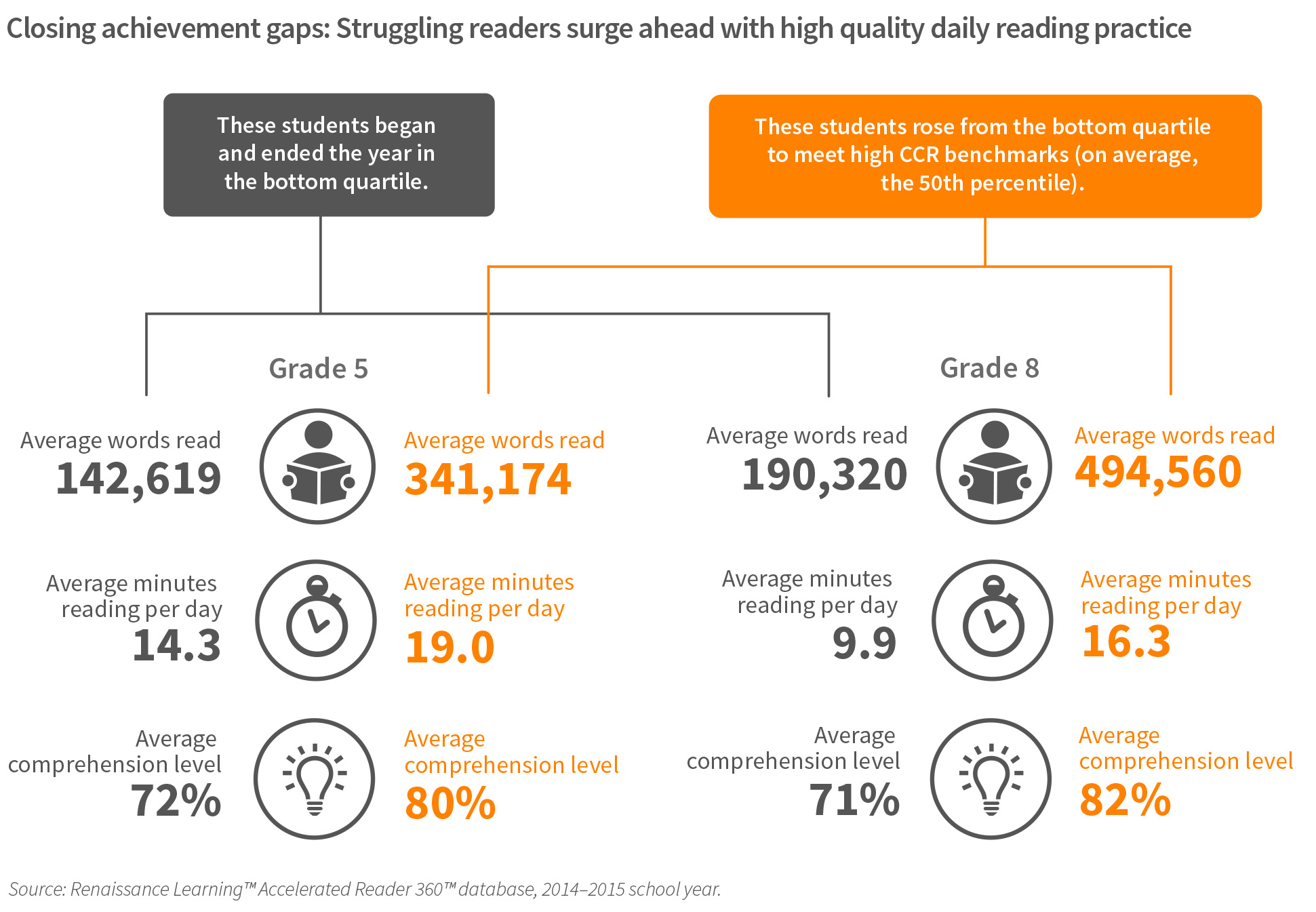November 10, 2015
It all comes down to the first sentence. That’s how I decide. If the writing pulls me in, I’ll buy or borrow the book. If not, it remains on the shelf, whether physical or virtual. No matter how riveting a book sounds in a synopsis, on a book jacket, or via word of mouth, if the author’s first utterance doesn’t hook me, I move on.
And so, as a voracious—albeit picky—reader, I can understand how students need to find just the right book to open up the world of reading to them. Not to mention how important that just-right book is to a resistant reader, and even more so to that student who may make the effort but, for one of myriad possible reasons, is finding it a struggle to read.
The analyses in the new What Kids Are Reading: And the Path to College and Careers underscore just how critical reading practice is—how critical it is that students are motivated to practice this skill. Yes, practice the physical act of reading. Students need to exercise their reading muscles every day to become proficient readers. 
This practice allows them to move past decoding to understanding. With enough practice, they can open the pages of a book to absorb information, to research unknown subjects, to understand the world around them, to stretch their mind and imagination, or perhaps to just escape into another world for a while.
This year’s What Kids Are Reading report examines reading practice data on 9.8 million students in grades 1–12 in over 31,000 US schools in the 2014–2015 year. Here is a snapshot of the report’s findings about the state of student reading practice:
How Student Reading Compares to the Level Required in College and Careers
- Readership of books within new college and career difficulty bands is inconsistent throughout students’ schooling. The addition of concerted efforts to read nonfiction—such as with informative articles—is a viable option for keeping student reading at recommended levels.
- Likewise, students in grades 1–12 are selecting books to read at levels far lower than the reading they’ll be responsible for as adults and in workplace settings. Informational articles can begin to bridge this gap.
- Very few high schoolers are choosing to read books at levels that reflect their grade level.
- Books with STEM topics (science, technology, engineering, and math) are lacking from students’ reading diets.
- Even as states opt out of the Common Core State Standards, the impact of new expectations for nonfiction reading can be seen nationwide; however, levels of nonfiction reading are still far below where they need to be, with girls, in particular, trailing their male counterparts.
- The impact of new standards on expectations for nonfiction reading can be seen nationwide. However, nonfiction reading is still far below where it needs to be.
How Struggling Students Can Regain Their Footing
- The data show that the return on investing a few extra minutes per day in reading can effect startling change over the long term.
- As the graphic below illustrates, struggling readers who start out the school year in the bottom quartile aren’t stuck there.
 With dedicated, high quality daily reading practice, they can make great strides in reading and achieve college- and career-readiness benchmarks.
With dedicated, high quality daily reading practice, they can make great strides in reading and achieve college- and career-readiness benchmarks. - The right combination of high-quality reading practice characteristics can make students more likely to meet college- and career-readiness benchmarks.

The tools a student gains from a book are gifts that keep giving. The returns on their investment in reading practice are invaluable as they progress through early schooling, into colleges and universities, and ultimately into whatever future profession they choose to pursue. The bottom line is that kids need to read. A lot. Every day. A variety of books at the right level. It may take a bit to find that first book to hook them, but it’s worth the extra effort as the returns on the time they’ll spend engaged in this critical purpose will pay off in spades. May the What Kids Are Reading report serve as a wake-up call—and as a guide to help us find that just-right book to get students going. Let’s get our kids inspired and started down the path to fulfilling futures.
How do you inspire your students to read? Are there certain titles you’ve noticed seem to hook kids again and again—books that serve as a tried-and-true launching pad to other reads? Please share in the comments below.

